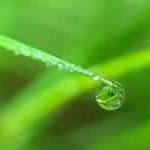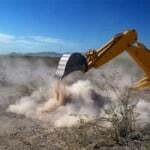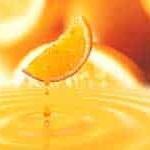 Phosphate chemicals have long been a core ingredient in soaps and detergents. Because of their capacity to mix with both water and fat, phosphates are highly effective at dislodging fat molecules (oil, grease etc.) and dispersing them in water. If you’ve ever tried washing an oily plate with only water, and then again with water and detergent, you’ll know that the detergent makes all the difference. It’s phosphates and other related chemicals that make this possible.
Phosphate chemicals have long been a core ingredient in soaps and detergents. Because of their capacity to mix with both water and fat, phosphates are highly effective at dislodging fat molecules (oil, grease etc.) and dispersing them in water. If you’ve ever tried washing an oily plate with only water, and then again with water and detergent, you’ll know that the detergent makes all the difference. It’s phosphates and other related chemicals that make this possible.
The problem with phosphates is not so much the chemicals themselves, but the flow-on effects they create once they’ve been disposed of. When phosphates disappear down the drain, their journey is only just beginning. Once these chemicals are released into our waterways, a whole new process begins that can lead to all sorts of problems. Phosphates are rich in the types of nutrients necessary to support marine plant life. This means a glut of phosphate chemicals in the water can spur on huge growth in underwater plant life, radically upsetting the marine ecosystem.[1]
The biggest problem this creates is the growth of poisonous algae blooms. Algae thrive on phosphate nutrients, and certain varieties such as blue-green algae are toxic to humans and potentially very hazardous. Blue-green algae is known to cause nausea, diarrhoea, vomiting, and in extreme cases pneumonia and paralysis[2] – not the sort of thing we want in our water supply.
The drama doesn’t end there. Phosphates released into the water gradually build up over time into deposits, which contain high levels of naturally-occurring heavy metals like lead, nickel and chromium. We know well the hazards the these metals pose, particularly to children. Nervous system toxicity, memory impairment and severe brain damage have all been linked to heavy metal exposure.[3] With phosphate deposits in our lakes and rivers, there is a serious risk of heavy metals penetrating into our drinking water supply. The consequences of this are far-reaching and deadly – not even remotely worth the risk if we can avoid it.
All of this boils down to a simple truth: we need reduce our usage of phosphate-based products and find safer alternatives. The Envirosafe Solutions product range is 100% phosphate free, because we understand that the risks involved with using these products simply outweigh the benefits. We are constantly exploring enzyme technology and other alternative ingredients to produce the cleaning results without the negative effects of phosphates. Make sure that your business isn’t contributing to water pollution and public health risks by insisting on phosphate-free soaps and detergents. It’s time to think smarter about the cleaning products we use.
[1] http://www.howstuffworks.com/phosphate-info.htm
[2] http://www.derm.qld.gov.au/factsheets/pdf/water/w3.pdf
[3] http://pureflow.com.au/water-articles/heavy-metal-health-risks.php
























